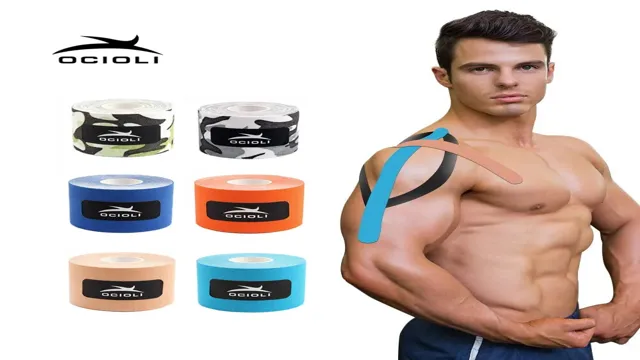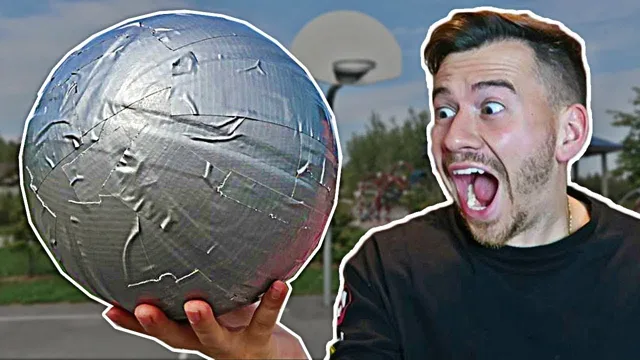Have you ever wondered why basketball players always seem to have tape on their hands or fingers? It’s not just for show, but rather an essential tool to help enhance their game. Tape for basketball comes in a variety of shapes and sizes, each with its own specific purpose. Knowing how to choose and use the right tape can make a significant difference in your performance on the court.
In this blog, we’ll guide you through the selection process and show you how to use tape properly, so you can elevate your basketball game to the next level.
Why tape is important for basketball players
Basketball players rely heavily on tape to protect their fingers, wrists, ankles, and other body parts from injuries during the game. Tape helps to provide stability, support, and compression to the muscles and joints, which helps to reduce the risk of sprains and strains. It also helps to minimize the movement of joints and muscles in the affected areas, allowing the body to heal faster without causing further damage.
Additionally, tape can be used to increase grip and improve hand control, which can be crucial for ball handling and shooting accuracy. In short, tape is an essential tool for basketball players, as it helps to prevent injuries and enhance performance on the court. So, if you’re a basketball player looking to up your game, make sure to have some tape ready in your kit bag!
Preventing injuries and providing support
As a basketball player, it’s important to take precautions to prevent injuries and provide support for your body. That’s where tape comes in. Tape is an essential tool for athletes to keep their joints and muscles in check during tough games and practices.
Through taping, one can limit the range of motion in the joint, reduce pain and inflammation, and support weak muscles. It serves as a reinforcement to the body and offers stability to areas of the body prone to injury. For example, taping your ankles can help prevent sprains that are all too common in the game of basketball.
Taping can also provide a psychological boost for athletes, who feel more confident in their movement when they know their bodies are supported. So, if you want to stay strong and avoid injuries, make sure you add tape to your pre-game routine.

Enhancing grip and control on the ball
When it comes to basketball, having a solid grip on the ball is crucial for players. This is where tape comes in as an essential tool for enhancing grip and control. Basketball players often tape their fingers and hands to provide added grip, especially during games where the ball can get slippery with sweat.
Additionally, taping can also help to prevent injuries by adding support and stability to the fingers and wrists. The use of tape is not only limited to the hands; players can also tape their shoes to prevent slipping on the court. Players may use different types of tape depending on their preference, such as cohesive tape, athletic tape, or kinesiology tape.
All in all, using tape can significantly impact a player’s performance by improving their grip and reducing the risk of injury. So, next time you hit the court, don’t forget to tape up!
Types of tape for basketball players
Basketball players often use tape to support their joints and muscles during games and practices. There are several different types of tape that can be used depending on the player’s needs. One popular option is athletic tape, which is made from a breathable cotton material and often used for wrapping around ankles and wrists for added stability.
Kinesiology tape, also known as “KT tape,” is another option that is designed to mimic the natural movements of the body. It is stretchy and flexible, and can be used to provide support to muscles and joints without restricting movement. There are also specialized tapes, such as pre-wrap tape, which is used as a base layer for other types of tape.
It is important to consult with a healthcare professional or trainer to determine the best type of tape for your specific needs as a basketball player. By using the right type of tape, you can improve your performance on the court and prevent injuries.
Athletic tape vs. kinesiology tape
Basketball players often require some form of tape to prevent or treat injuries. Two popular types of tape are athletic tape and kinesiology tape. Athletic tape, also known as white tape, is a stiff, non-elastic tape that is used to wrap joints, stabilize muscles, and support ligaments.
It is commonly used for ankle and wrist sprains, as well as finger and thumb injuries. On the other hand, kinesiology tape, also known as k-tape, is an elastic tape that mimics the movement of muscles and skin. It is used to treat muscle strains and overuse injuries and to improve circulation and lymphatic flow.
The bright-colored tape is often seen on athletes’ arms, legs, and backs. While both types of tape can be beneficial for basketball players, it ultimately depends on the specific injury or condition being treated. Athletic tape provides more rigid support, whereas kinesiology tape can help improve movement and flexibility.
So, next time you reach for tape, consider which type will best suit your needs on the basketball court.
Factors to consider when choosing tape
When it comes to basketball, players need to take care of their hands and wrists to avoid injury. Utilizing the right tape can make a huge difference in ensuring their safety on the court. The main types of tape used in basketball are athletic tape, pre-wrap, and kinesiology tape.
Athletic tape is the most common type, providing support and stability to the hands and wrists. Pre-wrap is used as a protective layer before applying athletic tape, preventing irritation on the skin. Kinesiology tape is gaining popularity in the basketball world, providing support while also allowing for flexibility and range of motion.
Players must consider their individual needs and preferences when choosing the right tape. Is it for added support or flexibility? Will it irritate the skin or is it easy to remove? By considering these factors, athletes can choose the tape that best suits their game and needs.
Top brands of tape for basketball players
As a basketball player, it’s important to take care of your body, and that includes preventing injuries. One way to do that is by using tape to provide extra support and stability to your joints, such as your ankles and knees. There are many types of tape on the market, but some of the top brands for basketball players are KT Tape, Mueller, and RockTape.
KT Tape is known for its stretchiness and flexibility, making it great for joint support without restricting movement. Mueller tape is a popular choice for athletic trainers because of its strong adhesive and durability. RockTape is another great option that’s known for its ability to help with blood flow and promote healing.
Ultimately, the type of tape you choose will depend on your specific needs and preferences, so it’s important to do your research and find the best option for you. By using tape to provide support and prevent injuries, you can stay on top of your game and enjoy playing basketball for years to come.
How to tape your ankles for basketball
If you’re a basketball player, it’s crucial to know how to tape your ankles properly to prevent injuries. Tape for basketball should be used to provide support and stability to your ankles, especially during lateral movements and jumps. First, ensure your ankle is clean and dry.
Apply pre-wrap around your ankle and foot, then apply a base layer of tape around the ankle in a figure-eight pattern. Make sure to wrap the tape snugly but not too tight. Add a second layer in the same figure-eight pattern, overlapping the first layer by half.
Finally, add a stirrup around your heel for extra support. Remember to check for any areas that may be too tight or uncomfortable, and adjust accordingly. Properly taping your ankles can prevent injuries and keep you on the court for longer periods.
Step-by-step instructions for ankle taping
If you’re a basketball player, ankle injuries can seriously impact your performance on the court. That’s why taping your ankles can be a crucial preventative measure to help minimize the risk of injury. Here’s a step-by-step guide on how to tape your ankles for basketball.
First, make sure your skin is clean and dry. Applying tape to sweaty or dirty skin can reduce its effectiveness. Then, start by wrapping the tape around the arch of your foot just above your heel.
Make sure the tape is snug but not too tight, as this can impede blood flow. Next, wrap the tape around your heel, still keeping it snug but not too tight. Then, bring the tape up and over the top of your foot and around your ankle, making sure to cover the entire joint.
Repeat this step two or three times until your ankle feels well-supported. Finally, finish by wrapping the tape around the top of your foot and back down across your arch. This will create a figure-8 pattern around your foot that will provide extra stability and support.
Make sure the tape is securely in place, but not so tight that it causes discomfort. Remember, ankle taping should not replace proper conditioning and warm-up routines, but it can be an important addition to your basketball safety arsenal. By following these simple steps, you can help keep your ankles healthy and strong, allowing you to focus on your game instead of potential injuries.
Tips for proper taping techniques
Taping your ankles properly is crucial when it comes to playing basketball. Poor taping can lead to injuries that can sideline you and keep you from your favorite sport for months. Here are some tips to help you tape your ankles correctly.
First, make sure your feet are clean and dry before applying tape. Start by wrapping the tape around your ankle, just above the bone. Make sure it’s snug but not too tight.
Then, wrap the tape around your foot, just under the ball of your foot, and over the top of your arch. Continue wrapping the tape around your ankle, crossing in front of your ankle bone and behind it, forming an X. Finally, wrap the tape around your ankle one last time, ensuring that it’s secure and snug.
Remember, proper taping is all about stability and support, so don’t be afraid to use a little extra tape if necessary. With these tips, you’ll be able to keep your ankles safe and secure while you enjoy your favorite game.
Other areas to tape for basketball players
When it comes to tape for basketball players, there are a few other areas that can benefit from some extra support. One of these areas is the fingers. Taping your fingers can help prevent jamming or dislocation during the game.
Additionally, some players choose to tape their wrists for added stability and support during intense plays. Another area to consider taping is the ankles. Ankle tape can help prevent sprains and other injuries during those quick movements on the court.
Overall, proper taping techniques can provide valuable protection for basketball players in multiple areas of the body. By applying the right amount of support to these vulnerable areas, players can have the confidence they need to perform their best on the court. So, don’t forget to consider taping your fingers, wrists, and ankles in addition to your usual gear before hitting the court for game day.
Wrist and fingers
Despite the focus on ankles and knees in the sport of basketball, there are other areas of the body that can benefit from taping. One of these areas is the wrist and fingers. Taping can provide support and stability to these small joints, which can be prone to sprains and strains while dribbling and shooting.
It can also help prevent hyperextension and increase proprioception, allowing players to have better control and feel over the ball. When taping the wrist, it is important to wrap the tape snugly, but not too tightly, as this can cause circulation issues. It is also crucial to allow for a range of motion in the fingers, as players need to be able to grip the ball comfortably.
By taking a little extra time to tape these areas, basketball players can reduce the risk of injury and improve their performance on the court.
Knees and joints
Aside from taping their knees and ankles, basketball players may need to tape other areas as well. For instance, it’s not uncommon for players to tape their fingers together to prevent them from getting jammed or sprained during the game. Additionally, players may tape their wrists to provide extra support and stability when shooting or making tackles.
Another area that players may tape is their elbows, especially if they have a history of elbow injuries. By taping their elbows, players can help ease the strain on their joints and reduce the risk of getting injured again. Ultimately, taping additional areas of the body can help provide basketball players with an extra layer of protection, which is crucial in a high-impact sport like basketball.
Elbows and shoulders
Basketball players put a lot of strain on their elbows and shoulders due to the repetitive motion of shooting, passing, and dribbling. Taping these areas can provide additional support and prevent injuries. When taping the elbow, it’s important to start at the wrist and wrap upwards towards the upper arm.
This will provide compression and stability to the joint. Additionally, taping the shoulder can help reduce the risk of rotator cuff injuries. To tape the shoulder, start at the base of the neck and wrap around the shoulder, making sure to cover the top of the shoulder and the front of the chest.
Remember to avoid taping too tightly, as this can restrict movement and cause discomfort. With proper taping techniques, basketball players can provide extra support to their elbows and shoulders, allowing them to play at their best while reducing the risk of injury.
Conclusion
In conclusion, just like tape can be used to keep things together, basketball brings people together. With each dribble and jump shot, the court becomes a meeting place for individuals from all walks of life who share a common love for the game. And just like tape, basketball can provide a sense of stability and security, whether it’s through the bonds created by a tight-knit team or the feeling of accomplishment that comes from sinking a difficult shot.
So next time you hit the court, don’t forget to bring your trusty roll of tape – you never know when you might need to patch up your game or your spirits.
FAQs
What is the standard length of tape used for basketball?
The standard length of tape used for basketball is typically 10 yards.
How does taping your ankles prevent basketball injuries?
Taping your ankles can provide additional support and stability, which can help prevent sprains and other injuries while playing basketball.
Can tape be used to improve basketball shooting accuracy?
While tape may not directly improve shooting accuracy, it can be used to mark spots on the court or provide visual cues for players to aim for when practicing their shots.
Is there a specific type of tape that is best for basketball?
While there are different types of tape that can be used for basketball, athletic tape is often the most popular choice for players and trainers due to its durability and flexibility.


